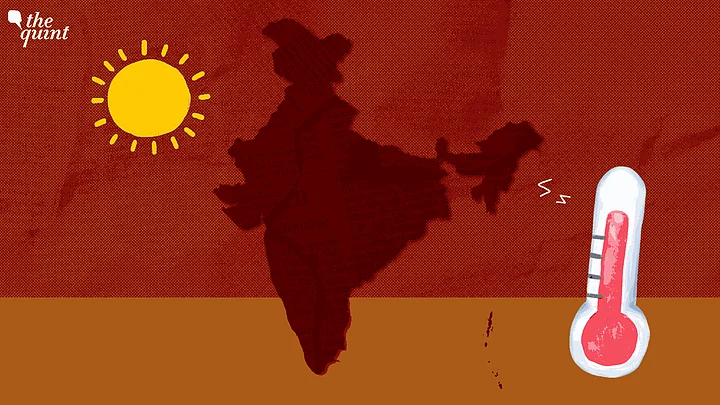In 2022, meteorologists in India sounded the first heatwave alert of the year as early as March, with the country witnessing some of the most extreme temperatures in India's recorded history. This year, the heatwave alert has come even earlier.
On 15 February, the maximum temperatures in Jammu and Kashmir, Ladakh, Himachal Pradesh, Rajasthan, and some parts of Uttarakhand, Gujarat, Madhya Pradesh, and Chhattisgarh were higher by more than 5 degrees Celsius, according to the India Meteorological Department (IMD).
In fact, on 16 February, Bhuj in Gujarat recorded the highest temperature for the month of February in 71 years at 40.3 degrees Celsius.
Shimla saw its warmest February day in 17 years on Saturday, 17 February, with the temperature reaching 23.2 degrees Celsius. On Monday, 20 February, Delhi recorded its warmest February day in 17 years (33.6 degrees Celsius).
So, why are parts of the country recording high temperatures even though February has not yet ended? And what kinds of effect will such a phenomenon have? Read on.
Why Are Temperatures Rising So Early on?
As the effects of climate change become more apparent, such things will become more common, Krishna Achutarao, a professor and Head of Centre for Atmospheric Studies, Indian Institute of Technology (IIT) Delhi, told The Quint.
But what exactly happened to spike the daytime temperature over parts of northwest, central, and western India by 5-8 degrees Celsius above normal till 20 February?
Mrutyunjay Mohapatra, Director General of Meteorology, IMD, explained to The Quint:
"The rise in temperature was primarily due to an anticyclone lying over Gujarat. For instance, when we want to tighten a screw, we rotate a screwdriver clockwise which make the screw go downwards. Similarly, during an anticyclone the wind rotates clockwise causing it to flow downwards."
"As the wind blows downwards, the air gets compressed and causes a rise in temperature. Therefore, over whichever area there is an anticyclone formation, the area automatically becomes warmer. There is no cloud formation as there is no upward motion of air," he added.
In other words, because of the anticyclone area over Gujarat, the wind laden with heat energy was blowing towards northwest India to places like Delhi and Haryana, causing these places to become hot.
He, however, added that the anticyclone is expected to move to Arabian Sea by Wednesday, 22 February.
"Over the next two to three days, there will be a fall by two-three degrees Celsius after a western disturbance affecting the western Himalayan region recedes. But the temperature will still continue to remain above normal –and it can have an impact on certain crops, " he added.
What Is Expected During Spring?
Raghu Murtugudde, a professor with the Department of Atmospheric and Oceanic Science in the University of Maryland and visiting professor at IIT Bombay, explained to The Quint that it is too early to say if spring will be a scorcher.
"We just have to be ready for the worst," he said, adding that it remains to be seen if an El Niño will evolve soon.
The spike in temperatures have worried experts who say that the spring season, which is crucial for wheat production, is shrinking dangerously.
Chandni Singh, a senior researcher at the Indian Institute for Human Settlements (IIHS) and lead author of the Intragovernmental Panel on Climate Change's (IPCC) Sixth Assessment Report, told The Quint, "High temperature causes the wheat grain to shrink and causes yield loss."
The temperature spike in wheat-producing states is concerning given that last year's heat brought wheat production down by about almost 11 million metric tonnes.
India is the world's second-largest wheat producer, and it ended up banning exports of the grain, furthering the global wheat supply crisis from the Ukraine-Russia war.
What Will Be the Other Knock-On Effects?
"High temperatures often have second-order impacts that is not talked about. It can lead to water bodies drying up causing drought-like conditions in summer months. It will also lead to increased electricity demand," Singh told The Quint.
Last year, India witnessed the most persistent, widespread, and severe heat in the country's recorded history – a once-in-a-hundred-year event.
But unlike last year, scientists have predicted a high likelihood that El Nino, the warming of the Pacific Ocean, will further increase the severity of India's weather this year.
The past few years have witnessed the opposite effect of La Nina, the cooling of those waters.
(At The Quint, we question everything. Play an active role in shaping our journalism by becoming a member today.)
